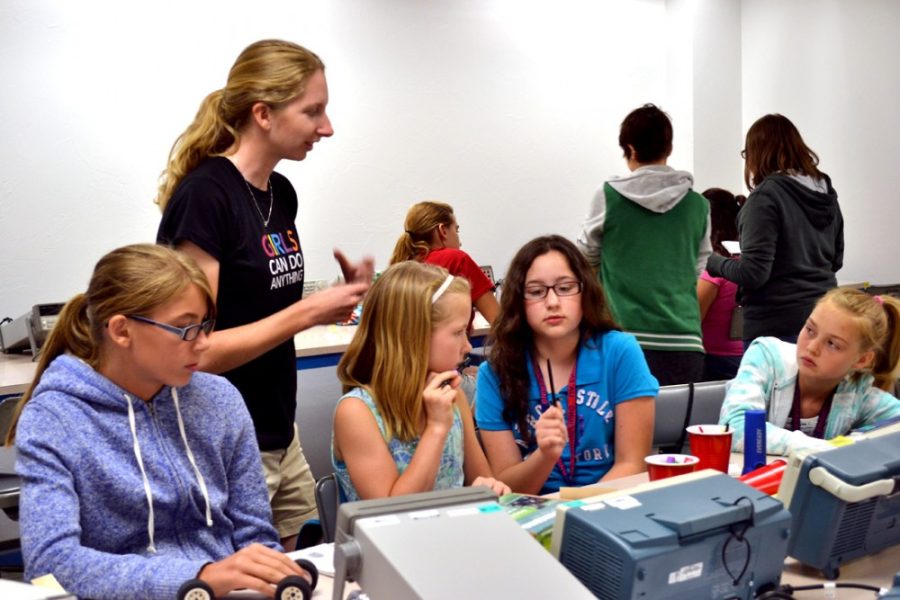The UA College of Engineering partnered with the Girl Scouts of Southern Arizona to hold a summer engineering camp for girls last week.
The camp, Imagine IT, was aimed to get girls interested in science, technology, engineering and math disciplines, which are fields typically dominated by men.
Women account for about 18.4 percent of engineering bachelor’s degrees with the trend moving upwards, according to a 2011 study from the American Society for Engineering Education.
“Girls get a lot of messaging from older generations, media and sometimes even their teachers about how math and science are only for boys,” said Ted Gatchell, coordinator of recruitment, retention and outreach at the College of Engineering. “When we do encourage girls in the STEM fields, it is often in a way that doesn’t necessarily appeal to how young women think.”
The camp curriculum was designed around search and rescue scenarios and focused on a cooperative, rather than competitive approach to appeal to the girls.
“I think girls are drawn to fields that help people,” said Michelle Higgins, senior director of STEM and education relations for Girl Scouts of Southern Arizona. “We want to show them how technology makes that possible.”
Activities included designing packs for search and rescue animals, building transportable PVC piping shelters that can be easily packaged for disaster victims and designing, building and programming robots. 24 girls participated, most of them Southern Arizona middle school students.
The girls were told to design their robots to rescue people in a disaster scenario such as a hurricane, volcanic eruption, earthquake, forest fire or flood. The girls built their robots using everyday household items including foam, cardboard, glue and straws. They were also given Hummingbird Robotics Kits, which include sensors, lights and motors and allowed the girls to easily program the robots.
Intel Corporation covered the program costs for the camp and the American Association of University Women provided scholarships to 10 girls.
Guest speakers at the camp were Tucson Fire Captain Diane Benson, who spoke with the girls about the crucial role technology plays in her field, and Tucson Mayor Jonathan Rothschild, who encouraged the girls to consider STEM careers.
The girls asked Rothschild questions on a wide range of subjects from STEM opportunities in Tucson to the mayor’s plans for protecting the city against gun violence.
Gatchell said he hopes the camp will instill confidence in the girls and encourage them to consider careers in STEM areas.
“Getting girls involved in STEM is vital for our future,” Gatchell said. “These girls represent the next generation of leaders and the most we can do for them is give them the confidence to face challenges head-on and overcome them.”
Gatchell said he also predicts the partnership with the Girl Scouts will continue.
“This camp was a great success,” he said. “I am confident we can continue to develop it into something even better.”









